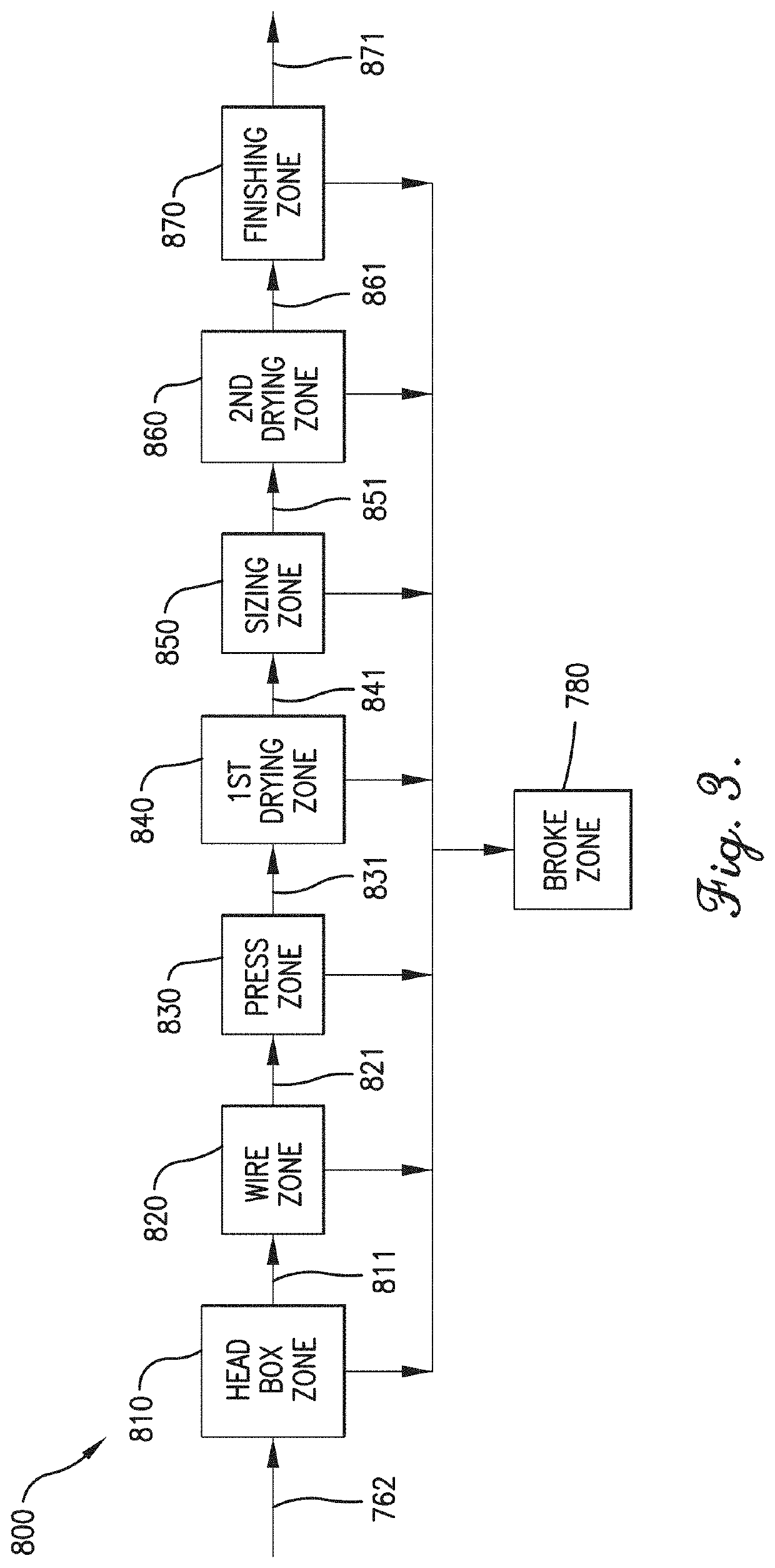Ultrasonic welding of wet laid nonwoven compositions
a technology of composition and ultrasonic welding, which is applied in the direction of synthetic cellulose fibres, textiles and papermaking, papermaking, etc., can solve the problems of web breakage, wet lay facility rate limiting steps, and water drainage rate,
- Summary
- Abstract
- Description
- Claims
- Application Information
AI Technical Summary
Benefits of technology
Problems solved by technology
Method used
Image
Examples
example 1
nage Analysis: Canadian Standard Freeness and Williams Slowness
[0685]In this example, the effect of CA staple fibers on the Canadian Standard Freeness (CSF) of the furnish composition is reported. The CSF is a measure of the drainage performance of a pulp slurry.
[0686]Lab 1 analyzes the Lab1 finished pulp slurry samples via Canadian Standard freeness test. Lab 2 analyzes the Lab 2 finished pulp slurry samples via Schopper-Riegler Freeness and converts the results to the Canadian Standard Freeness using a TAPPI table.
[0687]Differences between Lab 1 and Lab 2 controls are designed to impart different refining energies to the controls. Lab 1 uses a 5 lb. weight while Lab 2 uses a 12 lb. weight (5.5 kg)—both for 15 minutes in a Valley Beater. The additional refining energy at Lab 2 results in lower Canadian Standard Freeness results—particularly in the control samples and the co-refined samples. The results are reported in Table 10.
[0688]The CSF value of the control for Method 1, Lab 1 ...
example 2
Slowness
[0693]The Williams Slowness test method is described as follows:
[0694]This method describes a procedure for determining the time (sec.) required for 1000 ml of 0.3% consistency pulp slurry to pass through a known square area of a screen. This method is generally applicable to any wet laid furnish useful in the making of a paper sheet. The Williams Slowness Drainage apparatus, shown in FIG. 39, permits water flow from one side of a Williams Drainage Screen through to the opposite side. The specimen holder is a metal square 10.16 cm×10.16 cm (4 in.×4 in.) which encloses a wire mesh circle 8.26 cm (3.25 in.) in diameter clamped to a flat base plate of the same or bigger size. The area of paper specimen exposed to water flow is 53.56 cm2 or (8.29 in2). The metal parts should preferably be a brass or other corrosion-resistant material.
[0695]A 2 15 / 16 in. diameter cork with a cord attached to top is provided to lower and remove from the apparatus cylinder. The timer measures secon...
example 3
[0702]Thickness is measured in both Lab 1 and Lab 2 by averaging 4 thickness measurements at least 1 inch in from the edge near the midpoint of each side of the handsheet. The thickness of the handsheets is set forth in Tables 13-14.
TABLE 13Thickness (mm)Method 1, Lab 1Method 2, Lab 14%16%4%16%4%16%4%16%Variant0%CRCRPAPA0%CRCRPAPAControl0.1560.125CA10.1700.2100.1800.2310.1310.1570.1380.179CA20.1670.1940.1690.2080.1340.1500.1480.154CA30.1700.2040.1740.2530.1290.1470.1360.185CA40.1740.2090.1860.2520.1340.1570.1520.184CA50.1640.1890.1670.2170.1320.1490.1410.168
TABLE 14Thickness (mm)Method 1, Lab 2Method 2, Lab 24%16%4%16%4%16%4%16%Variant0%CRCRPAPA0%CRCRPAPAControl0.1750.133CA10.1890.2290.1960.250.1390.1690.1510.192CA20.1790.2110.1870.2270.1430.1640.1490.177CA30.1890.2240.1910.2590.1440.1600.1450.199CA40.1940.2270.1950.2620.1450.1710.1610.196CA50.1750.19940.1790.22960.1340.1550.1510.175
[0703]As can be seen from Tables 13-14 and from FIGS. 10-11, with the addition of Adding CE staple fi...
PUM
| Property | Measurement | Unit |
|---|---|---|
| Fraction | aaaaa | aaaaa |
| Volume | aaaaa | aaaaa |
| Mass | aaaaa | aaaaa |
Abstract
Description
Claims
Application Information
 Login to View More
Login to View More - R&D
- Intellectual Property
- Life Sciences
- Materials
- Tech Scout
- Unparalleled Data Quality
- Higher Quality Content
- 60% Fewer Hallucinations
Browse by: Latest US Patents, China's latest patents, Technical Efficacy Thesaurus, Application Domain, Technology Topic, Popular Technical Reports.
© 2025 PatSnap. All rights reserved.Legal|Privacy policy|Modern Slavery Act Transparency Statement|Sitemap|About US| Contact US: help@patsnap.com



